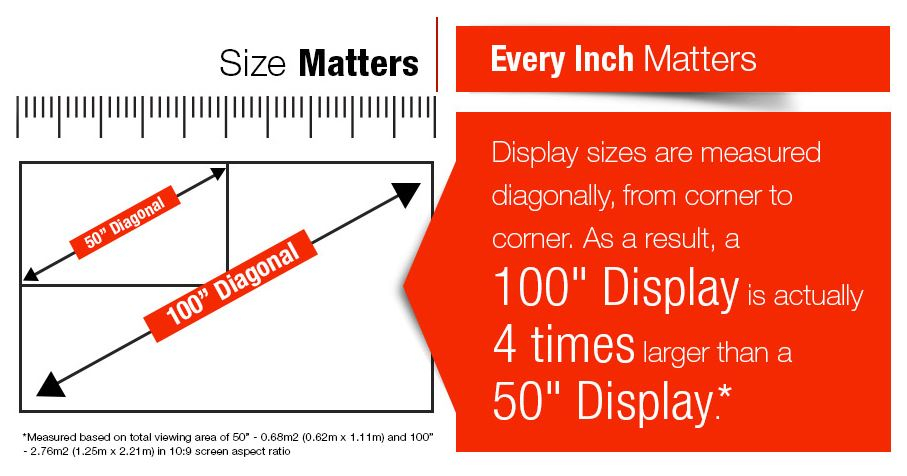Display size and resolution selection is an area of AV system design which is sometimes given too little thought. At DIBAV we try to focus the final design on the needs of your end-users as much as is possible. With this in mind; display size matters – a lot!
If we look at display and resolution from a historical perspective in schools there has been quite a lot of change over the 20 years we have been providing solutions.
In the beginning, we were installing 100” manual 4:3 projector screens in classrooms and the image came from a 4:3 projector. To make that simple, the screen size was 2m wide x 1.5m high. At XGA resolution the 11 point font that I’m writing in to draft this article would have been nearly 30mm high (11 points is normally 15 pixels, 1500mm high screen / 768 pixels = 1.95mm per pixel x 15 = 29mm).
Fast forward to 2019 and we have LCD display technology promising lower maintenance and clearer images (vs projection technology). While this is true and LCD screen can be a wonderful solution – just make sure you purchase a large enough size screen.
If we consider a 65” LCD screen running 4K resolution (as most do natively now) you can end up with substantially lower readability based on font sizes. In this example 65” 16:9 LCD display has an image size of 1.44m wide x 0.81m high. At 4K resolution, our same 11 point font would be just 5.6mm high, a massive 80% reduction in letter height for the same font (810mm high screen / 2160 pixels = 0.375mm per pixel, x 15 = 5.6mm).
Of course, the example above assumes your laptop connects at 4K resolution and you have not set up any special scaling at your operating system level, but all too often this is what occurs.
The point of this article is NOT to say LCD screens are bad technology. That is definitely not the case. The point here is to consider the content you are displaying and the furthest viewing distance of your users that need to read it and then to select/design an appropriate AV solution. If DIBAV can assist please give us a call.

